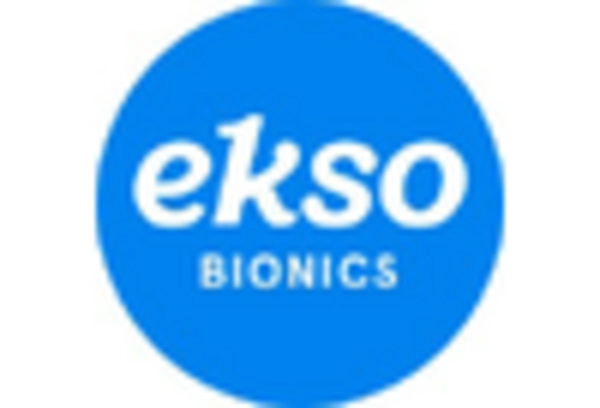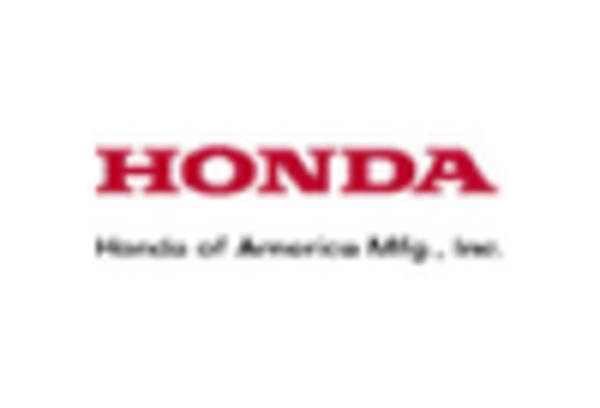Regulatory Support and Funding Initiatives
Regulatory support and funding initiatives play a crucial role in the growth of the Wearable Robotic Exoskeleton Market. Governments and regulatory bodies are increasingly recognizing the potential of exoskeletons in enhancing mobility and rehabilitation. This recognition has led to the establishment of funding programs aimed at supporting research and development in this field. For instance, various grants and subsidies are available for companies developing innovative exoskeleton technologies. Such financial support not only accelerates product development but also encourages collaboration between academia and industry. As a result, the market is likely to witness an influx of new entrants and innovative solutions, further driving the adoption of wearable robotic exoskeletons.
Aging Population and Associated Health Issues
The aging population presents a significant driver for the Wearable Robotic Exoskeleton Market. As the global demographic shifts towards an older population, the incidence of age-related health issues, such as arthritis and osteoporosis, is on the rise. These conditions often lead to decreased mobility, creating a pressing need for assistive technologies. Wearable robotic exoskeletons offer solutions that can enhance mobility and independence for elderly individuals. Market analysis suggests that the demand for exoskeletons tailored for the elderly is expected to increase by 40% in the coming years. This demographic trend underscores the importance of developing exoskeletons that cater specifically to the needs of older adults, thereby expanding the market potential.
Increased Demand for Rehabilitation Solutions
The rising demand for rehabilitation solutions significantly drives the Wearable Robotic Exoskeleton Market. As the prevalence of mobility impairments increases, there is a growing need for effective rehabilitation technologies. Exoskeletons offer promising solutions for patients recovering from strokes, spinal cord injuries, and other conditions that affect mobility. Market data indicates that the rehabilitation segment is projected to grow at a compound annual growth rate of 25% over the next five years. This surge in demand is prompting healthcare providers to invest in advanced rehabilitation technologies, thereby expanding the market for wearable robotic exoskeletons. The ability of these devices to facilitate movement and improve patient outcomes positions them as essential tools in modern rehabilitation practices.
Growing Industrial Applications and Workforce Safety
The Wearable Robotic Exoskeleton Market is also driven by the growing industrial applications of exoskeletons aimed at enhancing workforce safety and productivity. Industries such as construction, manufacturing, and logistics are increasingly adopting exoskeletons to reduce the risk of musculoskeletal injuries among workers. These devices assist in lifting heavy objects and performing repetitive tasks, thereby minimizing physical strain. Recent studies indicate that companies implementing exoskeletons have reported a 20% reduction in workplace injuries. This trend not only improves employee safety but also enhances operational efficiency, making exoskeletons an attractive investment for businesses. As industries continue to prioritize worker safety, the demand for wearable robotic exoskeletons is likely to rise.
Technological Advancements in Wearable Robotic Exoskeletons
The Wearable Robotic Exoskeleton Market is experiencing rapid technological advancements that enhance the functionality and efficiency of exoskeletons. Innovations in materials, such as lightweight composites and smart textiles, contribute to improved user comfort and mobility. Furthermore, advancements in artificial intelligence and machine learning enable exoskeletons to adapt to the user's movements, providing a more intuitive experience. According to recent data, the integration of sensors and actuators has led to a 30% increase in the effectiveness of rehabilitation programs. These technological improvements not only enhance the performance of exoskeletons but also expand their applications across various sectors, including healthcare, military, and industrial settings.

















Leave a Comment